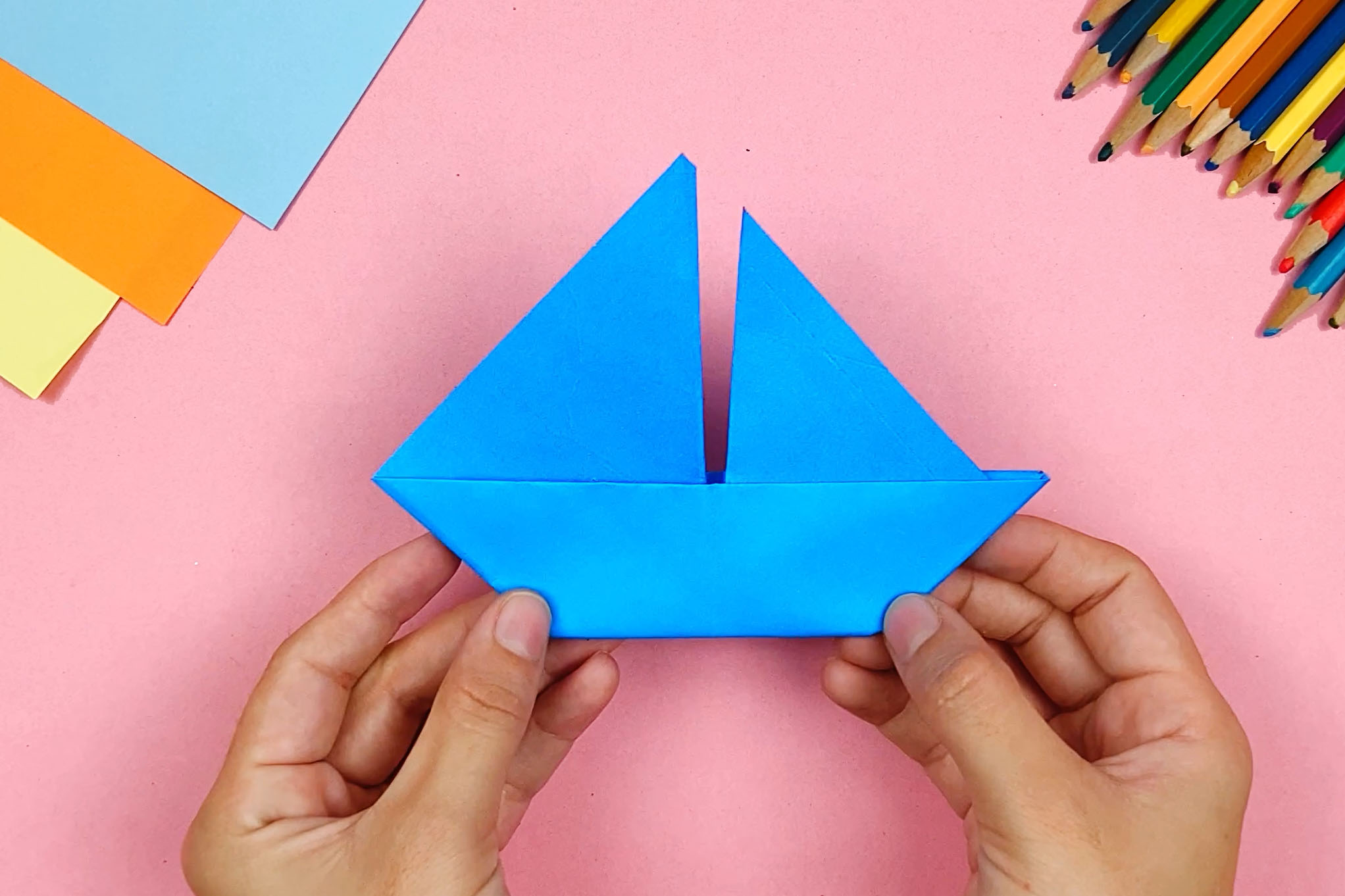This step-by-step tutorial shows you how to make a fun ladybug with simple materials in a short time without much effort. You’ll need an empty toilet paper roll, black and red clay paper, a small piece of white paper, a black felt-tip pen, a ruler, a glue stick and scissors. This great craft idea is great for younger children. You can use the lucky beetle as a decorative element or for playing.
How to create a funny ladybug step by step with a cardboard roll
Step 1: Cut rectangle
You draw a rectangle 4 zoll wide and about 6 zoll long with the pencil on a sheet of black clay paper. You cut out the rectangle with scissors.

Step 2: Connect sheet and roller
Wrap the rectangle tightly around the empty toilet paper roll and glue it in place where the ends touch or overlap. To do this, run the glue stick over the roll from top to bottom and press the paper firmly to the surface. The toilet paper roll is now coated in black.

Step 3: Wings
You take the red clay paper to hand and cut out a circle about 3 zoll in size. You fold the circle in the middle, open it and cut it at the fold into two equal parts. You now hold the two ladybug wings in your hand.

Step 4: Points on the wings
You draw small dots on each wing with the black felt-tip pen. How many dots you paint is up to you. The seven-spot ladybug has three dots on each wing cover. Another one is in the center front. But there are also ladybugs with more or less dots. What is allowed is what pleases. You can paint many small or few big dots on the wings.

Step 5: Attach the wings
Fan the wings to the side and glue them to the black beetle body. You fix the wings with glue where the upper tips slightly overlap. The loosely hanging wings open downward. Leave about two inches of space above the wings.

Step 6: Eyes of the ladybug
You cut two small circles from white paper. These are the eyes. Stick them side by side on the upper part of the roll just above the wings. With the black felt-tip pen you draw the pupils in the white circles.

Step 7: Ladybug antennae
You cut two narrow strips of black paper. These are about five to six centimeters long and about half a centimeter wide. These are the antennae. Of course, you can also buy ready-made antennae from coated wire in specialized stores.

Step 8: Attach probe
You coat the lower ends of the antennae with glue and press them side by side with a little space between them on the inside of the roll. The antennae now peek out above the eyes. The little ladybug is ready for use.

All instructions shown here are copyrighted by happycolorz GmbH.
Interested in using it? Please just send an email to nutzung@happycolorz.de.
More Crafting Ideas
-

Bee craft -

How to Make a Paper Boat -

How to make an envelope -

Ladybug Craft -

Origami Boat -

Butterfly Craft
More ideas for drawing
-

Airplane drawing -

Plane drawing easy -

Apple drawing -

Bicycle drawing -

Ship drawing -

Car drawing -

Car drawing easy -

Cat drawing -

Cow drawing -

Dinosaur drawing -

Dog drawing -

Puppy drawing -

Dragon drawing -

Digger drawing -

Fairy drawing -

Giraffe drawing -

Lion drawing -

Mermaid drawing -

Moon drawing -

Motorcyle drawing -

Penguin drawing -

Pig zeichnen (einfach) -

Princess drawing -

Reindeer drawing -

Rooster drawing -

Santa Claus drawing -

Shark drawing -

Sheep drawing -

Strawberry drawing -

Sunflower drawing -

Tiger drawing -

Tractor drawing -

Train drawing -

Tree drawing -

Tree drawing easy -

Tulip drawing -

Turtle drawing -

Unicorn drawing -

Unicorn drawing easy -

Witch drawing

